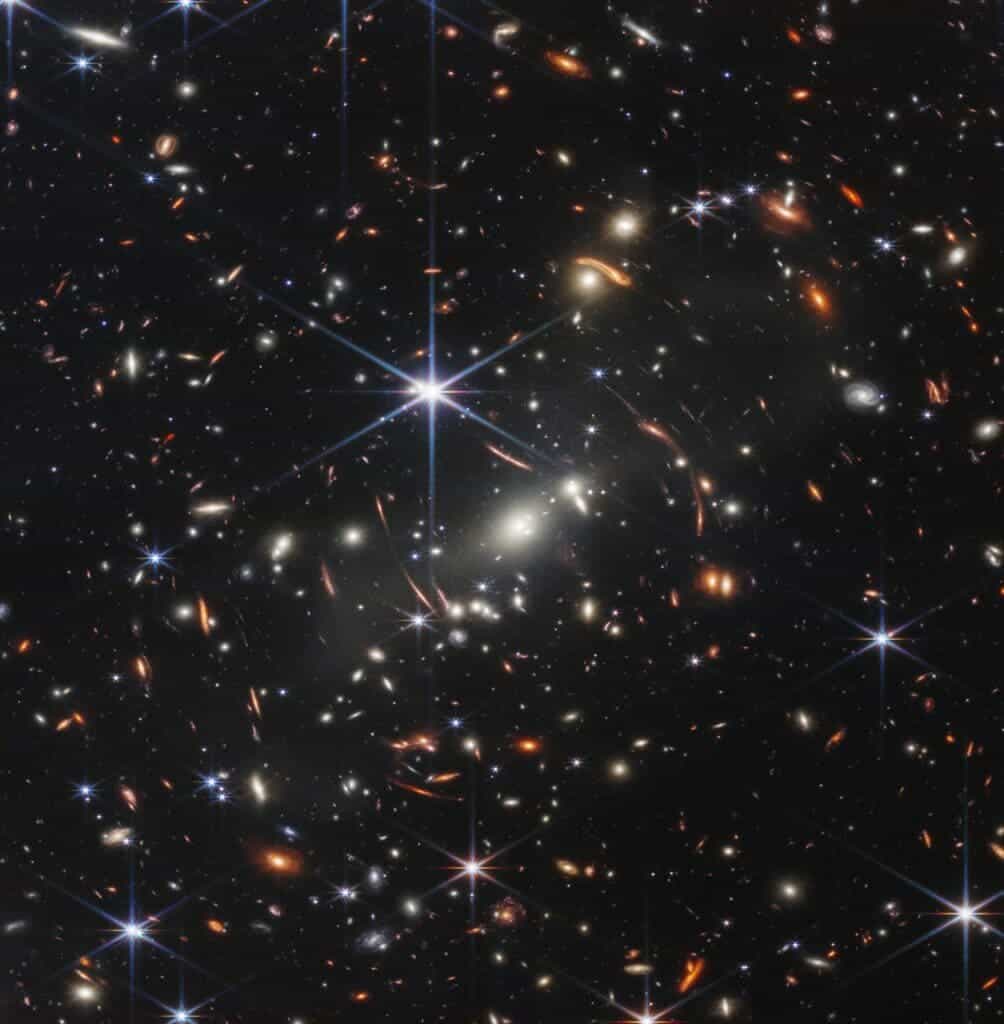The device is letting us peer deeper and further back into the universe than ever before.

The James Webb Space Telescope is a device without peer across all of human history. This, the most powerful telescope to ever be placed into our planet’s orbit, has recently snapped the clearest image of the universe we’ve ever seen. The image records the early universe as it was 13 billion years ago, according to a press statement from NASA this Monday.
The image was made public in a White House briefing by President Joe Biden. It captures thousands of galaxies and other features colorized in blue, orange, and white tones, including some of the faintest objects we have ever observed.
Peering far
“It’s hard to even fathom,” the president said while unveiling this picture. “These images are going to remind the world that America can do big things and remind the American people, especially our children, that there’s nothing beyond our capacity.”
Known as the Webb’s First Deep Field, the image shows the SMACS 0723 galaxy cluster which acts as a gravitational lens — its gravitational pull bends the incoming light from distant galaxies behind it towards the observatory, acting like a galactic-scale magnification lens. As this light has been stretched to a large extent by the time it reaches our planet, the Webb’s primary imager, the NIRCam, records in the near-infrared spectrum of light.
The image was produced as a composite shot, for which the telescope recorded a total of 12.5 hours. According to NASA, the telescope recorded more data during these hours than its predecessor, the Hubble Space Telescope, could record in a few weeks. These Tweets give a rough idea of the incredible amount of data that Webb can record, the mind-boggling levels of zoom it’s working with, and the sheer sensitivity of the device compared to its predecessors:
According to Avi Loeb, a professor of astronomy at Harvard, the reddish arcs seen in the picture are ancient galaxies, while the lighter-colored circles and ellipses are younger galaxy clusters closer to the telescope. This imagery shows cosmic structures as they were around 13 billion years ago.
According to President Joe Biden, the next set of images from the James Webb telescope will be released to the public later today, on Tuesday. These will revolve around the atmospheric details of faraway planets, on the “stellar nurseries” where stars form, galaxies locked in a tidal interplay, and the clouds of gas surrounding a dying star. One of these nurseries, Carina Nebula, has been made famous by NASA imagery of its structures such as the “Mystic Mountain” pillar, a three-light-year-tall cosmic pinnacle that was captured in an iconic image by Hubble.
Webb also allowed researchers to carry out a spectroscopy analysis — a type of analysis that uses the nature of light to obtain information about a sample’s chemical makeup — on a giant gas planet called WASP-96 b, discovered in 2014. The planet is nearly 1,150 light-years away from Earth and about half the mass of Jupiter.
Although exoplanet spectroscopy was a method that researchers were already using, Webb’s sensitivity allows for far more data to be obtained using this technique.
So why is Webb so much more powerful than any other telescope? First of all, it’s the newest one, and as such can draw on the most advanced technology to date. But its position also matters: the James Webb telescope was launched in December of last year aboard an Ariane 5 rocket from French Guiana and is currently in orbit around the Sun, at a distance of a million miles (1.6 million kilometers) from Earth. It occupies a region of space called the second Lagrange point. Here, it can stay in a fixed position relative to both the Sun and Earth while requiring minimal course corrections (and fuel to do so). NASA estimates that Webb will have enough fuel to operate for 20 years.
Its primary mirror is over 21 feet (6.5 meters) wide and is made up of 18 gold-coated segments. It was constructed to remain as steady as possible to ensure that it can use its sensitive equipment to its fullest potential and, according to Northrop Grumman, the company that built the telescope, it wobbles no more than 17 millionths of a millimeter.
President Biden’s showcase of the first image was meant to celebrate the telescope going into operation. Following the event, astronomers around the globe will be allowed shares of time to use the telescope, with projects selected through a process in which applicants and selectors don’t know each other’s identities, to minimize bias.


